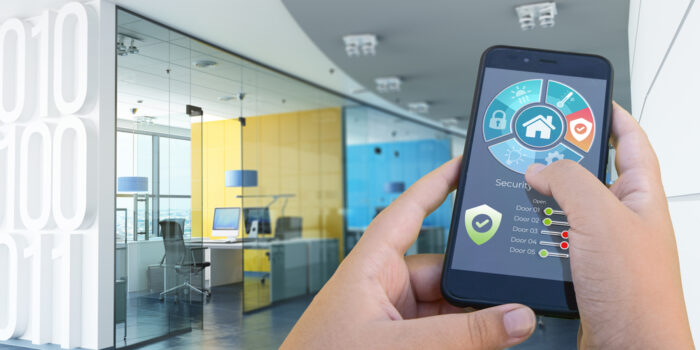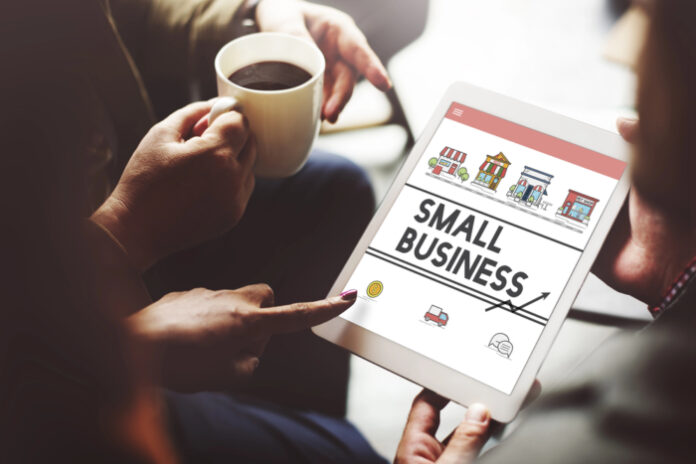Technology is an indispensable tool for small businesses; from streamlining operations to enhancing customer experiences, the impact of technology is palpable. However, the great aspects and impact of technology on small businesses can be overshadowed by the challenges. Having a solid understanding of the different technologies available and their nuances can be the tipping point for many small businesses, leading to a skyrocket upwards or a complete stumbling block to their growth. So, let’s explore the opportunities, challenges, and one specific aspect – the role of “smart” solutions for commercial building management – to get a better understanding of the technology landscape today.
Types of Smart Software Solutions for Small Businesses:
- Cloud Computing and SaaS (Software as a Service):
- Opportunities: Enables remote access to data, enhances collaboration, reduces infrastructure costs.
- Challenges: Data security concerns, potential for reliance on third-party services.
- E-commerce Platforms:
- Opportunities: Global reach, easy setup, personalized marketing opportunities.
- Challenges: Competition from larger players, technical complexities.
- Digital Marketing Tools:
- Opportunities: Targeted advertising, analytics for insights, cost-effective promotion.
- Challenges: Keeping up with trends, algorithm changes, data privacy regulations.
- Customer Relationship Management (CRM) Software:
- Opportunities: Improved customer service, personalized interactions, streamlined sales processes.
- Challenges: Implementation costs, user adoption, data management.
- Cybersecurity Solutions:
- Opportunities: Protects sensitive data, builds trust with customers, prevents financial losses.
- Challenges: Evolving threats, resource constraints, complexity of solutions.
Types of Smart Solutions for Commercial Building Management:
In addition to online/digital operations, the integration of smart technologies has revolutionized the way businesses operate in person.

Smart Lighting Technology
Most offices and small retail spaces have suspended/drop ceilings, making it simple to switch to smart LED lighting for suspended ceilings. Some of the top reasons to make the upgrade include:
- Energy Efficiency
- LED lights consume significantly less energy compared to traditional lighting systems, leading to reduced electricity bills for businesses.
- Smart controls allow for precise management of lighting, enabling automated adjustments based on occupancy, natural light levels, and time of day.
- Integration with building management systems provides centralized control and monitoring, optimizing energy usage across the facility.
- Cost Savings
- While the initial investment in LED lighting and smart controls may seem higher than alternatives, the long-term savings far outweigh the upfront costs.
- Energy efficiency rebates are available in many zip codes, helping offset the initial costs and reduce payback periods.
- LED lights last many years and predictive maintenance features in smart systems help identify issues early, minimizing repair costs and downtime.
- Enhanced Comfort & Productivity
- Proper lighting plays a crucial role in creating a comfortable and productive work environment.
- LED lights with adjustable color temperatures can mimic natural light, promoting employee well-being and productivity.
- Smart controls allow employees to customize lighting preferences, fostering a more personalized workspace experience.
- Environmental Sustainability
- By reducing energy consumption, businesses contribute to environmental sustainability efforts and reduce their carbon footprint.
- LED lights are free of toxic materials such as mercury, making them environmentally friendly and easier to dispose of responsibly.
- Smart building management systems enable data-driven decision-making, facilitating ongoing improvements in energy efficiency and sustainability practices.
Smart Security Technology
In today’s rapidly evolving business landscape, security is a top priority for small businesses. Fortunately, advancements in smart security technology offer innovative solutions to address these concerns effectively. Next, explore some key aspects of smart security technology:
- Surveillance Systems:
- Smart surveillance systems utilize high-definition cameras equipped with advanced features such as motion detection, facial recognition, and night vision capabilities.
- These systems can be integrated with cloud-based platforms, allowing business owners to access live video feeds and recorded footage remotely from their smartphones or computers.
- Real-time alerts notify business owners of any suspicious activity, enabling prompt response and potential prevention of security breaches.
- Access Control Systems:
- Traditional key-based access systems are increasingly being replaced by smart access control solutions, which utilize technologies such as keycards, biometrics, or mobile credentials.
- Smart access control systems provide businesses with greater control over who can enter their premises and at what times.
- Integration with centralized management platforms allows for easy administration of access permissions and tracking of employee movements.
- Intrusion Detection and Alarm Systems:
- Smart intrusion detection systems use a combination of sensors, including motion detectors, door/window sensors, and glass break detectors, to detect unauthorized entry attempts.
- Some systems take advantage of quantum sensing technology. This tech significantly enhances surveillance by providing highly precise measurements and detection capabilities.
- When triggered, these systems activate loud alarms and send alerts to designated individuals or monitoring centers, enabling swift response to potential security breaches.
- Integration with mobile apps enables business owners to receive notifications and remotely arm/disarm the alarm system as needed.
As small businesses continue to embrace technology, they must carefully evaluate the opportunities and challenges presented by different technological solutions. From cloud computing to e-commerce platforms, each tool has the potential to propel business growth when implemented strategically. For commercial building managers, the integration of LED lights with smart controls and adding smart security features stand out as prime examples of how technology can drive important day-to-day aspects in large commercial buildings. By leveraging the right smart solutions, small businesses can enhance operations, energy efficiency, and safety.
Find a Home-Based Business to Start-Up >>> Hundreds of Business Listings.

















































